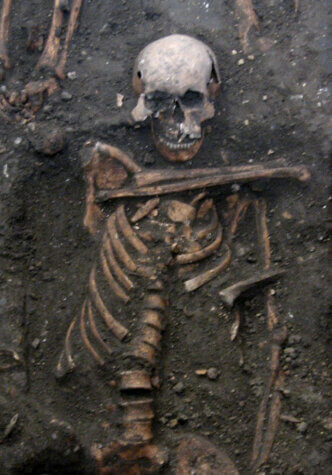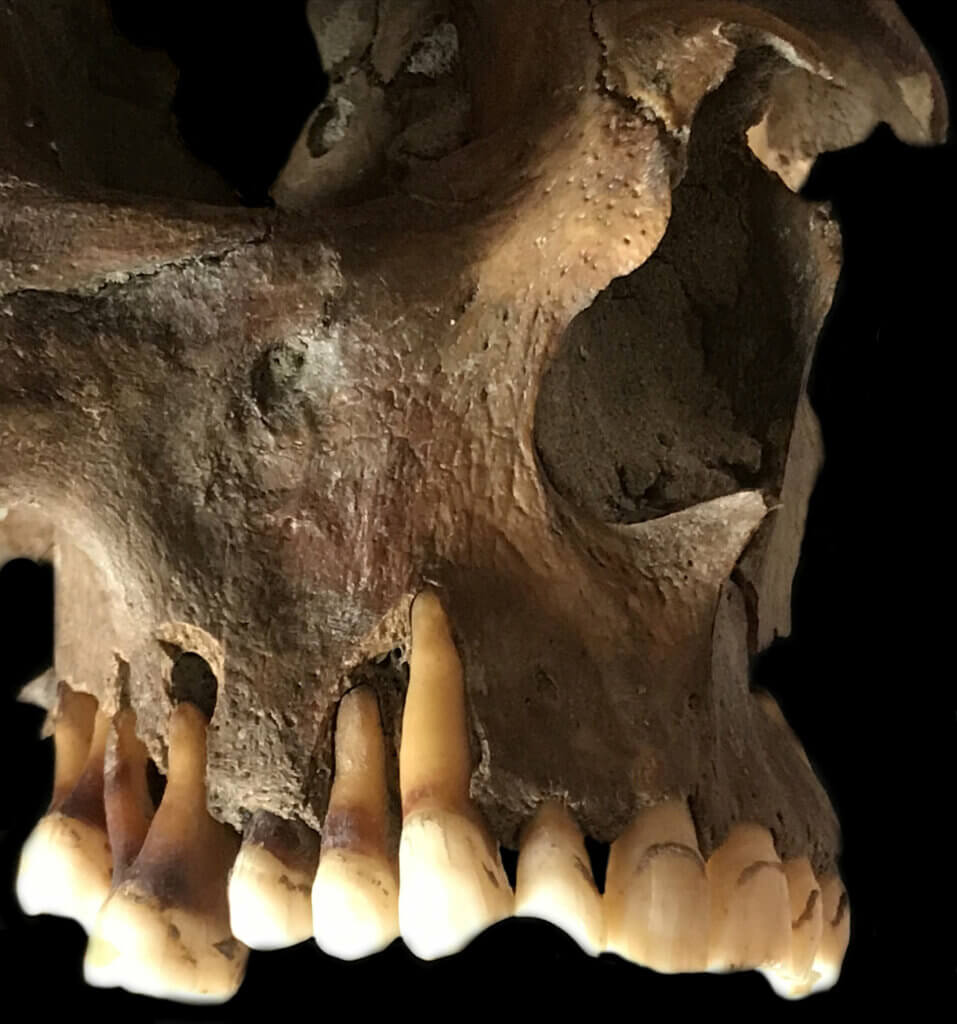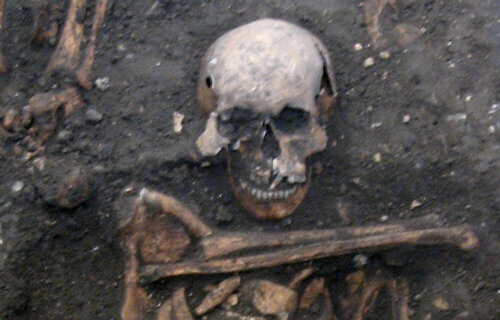CAMBRIDGE, United Kingdom — Unsightly facial cold sores date back 5,000 years, a new study examining the herpes virus reveals. It’s during this time that Bronze Age men and women began to engage in romantic and sexual kissing, according to researchers.
The infection’s prehistoric roots reportedly go back to when the cultural practice of romantic kissing arrived from the Far East. The team mapped ancient herpes genomes after extracting viral DNA from tooth roots of human skeletons spanning a millennium.
An analysis showed the painful lip blisters flourished during the Neolithic period, in the wake of vast migrations into Europe from the Steppe grasslands of Eurasia.
“Every primate species has a form of herpes, so we assume it has been with us since our own species left Africa,” explains co-senior author Dr. Christiana Scheib, a research fellow at St. John’s College in Cambridge, in a media release.
“However, something happened around five thousand years ago that allowed one strain of herpes to overtake all others, possibly an increase in transmissions, which could have been linked to kissing.”
Interbreeding triggered population booms across the continent, fueling higher rates of transmission, according to the study.

“The world has watched COVID-19 mutate at a rapid rate over weeks and months. A virus like herpes evolves on a far grander timescale,” says co-senior author Dr. Charlotte Houldcroft from Cambridge’s Department of Genetics.
“Facial herpes hides in its host for life and only transmits through oral contact, so mutations occur slowly over centuries and millennia. We need to do deep time investigations to understand how DNA viruses like this evolve,” Houldcroft adds. “Previously, genetic data for herpes only went back to 1925.”
The highly contagious herpes simplex virus (HSV) — which triggers painful blisters — spreads during sex or even just a kiss. The researchers point out the earliest known record of kissing is a Bronze Age manuscript from South Asia.
They suggest the custom — which was far from universal in early human cultures — may have travelled westward into Europe from Eurasia. In fact, centuries later, the Roman Emperor Tiberius tried to ban kissing at official functions to prevent disease spread, a decree that may have been herpes-related.
However, for most of human prehistory, HSV-1 transmission would have been “vertical” — meaning the same strain passing from infected mother to newborn child. There are two types, HSV-1 and HSV-2, which enter the body through the moist skin of the mouth, penis, vagina, or rectum. Both viruses can cause cold sores on the mouth, genital herpes, and small abscesses on the fingers or hands from contact with sores.
It currently infects some 3.7 billion people globally, but ancient examples of the original HSV-1 strain are surprisingly elusive. This is despite its contemporary prevalence and herpes having a history stretching back millions of years, to forms that infect animals from bats to coral.
The international team hunted down herpes in the remains of four individuals stretching over a thousand-year period. It often flares up in the mouth. At least two of the ancient cadavers had gum disease and a third smoked tobacco.
The oldest sample came from an Iron Age adult male who lived in Russia’s Ural Mountain region around 1,500 years ago. Two more were local to Cambridge, one being a young female unearthed at a 6th or 7th century Anglo-Saxon cemetery a few miles south of the city. The other belonged to a young man from the late 14th century, buried in the grounds of St. John’s College, a former medieval hospital. He had appalling dental abscesses.
The final sample came from a young man excavated in Holland, believed to have died in a massacre when French troops attacked his village on the banks of the Rhine in 1672. He was around 30 years-old and was a fervent smoker of clay pipes. Traces are visible in multiple places on the teeth.

“We screened ancient DNA samples from around 3,000 archaeological finds and got just four herpes hits,” says co-lead author Dr. Meriam Guellil from Tartu University’s Institute of Genomics.
Herpes is a chronic condition as it can become active after years of lying dormant in the body. The average outbreak rate is four to five times in the first two years of infection and less frequently afterwards.
“By comparing ancient DNA with herpes samples from the 20th century, we were able to analyze the differences and estimate a mutation rate, and consequently a timeline for virus evolution,” adds co-lead author Dr. Lucy van Dorp from the UCL Genetics Institute.
Cold sore symptoms can include swollen and irritated gums with sores in and around the mouth, a high temperature, nausea, and headaches. Two-thirds of the global population under the age of 50 now carry HSV-1, according to the World Health Organization.
For most people, the occasional lip sores that result from infection are embarrassing and uncomfortable. However, in combination with other ailments – sepsis or even COVID-19, for example – the virus can be fatal. In 2018, two women died of HSV-1 infection in the U.K. following caesarean births.
“Only genetic samples that are hundreds or even thousands of years old will allow us to understand how DNA viruses such as herpes and monkeypox, as well as our own immune systems, are adapting in response to each other,” Houldcroft notes.
The researchers are now planning to trace the hardy primordial disease even deeper through time, to investigate its infection of early hominins.
“Neanderthal herpes is my next mountain to climb,” Scheib concludes.
The study is published in the journal Science Advances.
South West News Service writer Mark Waghorn contributed to this report.


New development on herpes cure, you can ask______________ robin son buckler ( ) yahoocom.. . …………………………………